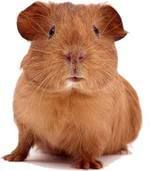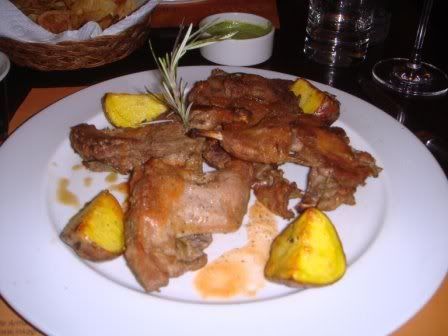Guinea pig meat is described as being similar to rabbit and Peruvians consume
an estimated 65 million each year.
Because guinea pigs require much less room than traditional livestock and reproduce
very quickly, they are a profitable source of food.
one of their favourite delicacies.
Although in most of the world guinea pigs are enjoyed as pets
- not ingredients- exporters hope the larger animal will be easier to sell abroad.
"It is really delicious," says Gloria Palacios, director of La Molina National University's export project.
"I think if they become familiar with the cuisine, maybe suddenly they'll give in and be tempted to try it," she adds.
For hundreds of years farmers high in the mountains of Peru have bred guinea pigs for food.
They provide an important source of protein for many people in the poor South American country.
Peruvians eat an estimated 65 million guinea pigs a year.
It is a dining experience with a difference, says the BBC's Peru correspondent Hannah Hennessy.
You need two hands to pick at the small amount of stringy meat from the carcass, which often comes with its head and legs attached, she says.
legs attached, she says.
It is often said to taste a bit like rabbit.
Segundo Quispe, left, and his nephew Maximo Quispe eat guinea pig in a restaurant in Lima, Peru Guinea pig has been enjoyed in Peru for centuries After more than three decades of research, Peruvian scientists say their super-guinea pig is almost twice the normal size, weighing just over 1kg (2.2lb).
The new breed is said to be meatier, tastier, high in protein and low in fat and cholesterol.About 1,000 are being exported every week, to the United States, Japan and
a handful of European countries with large  Peruvian immigrant populations. Besides their culinary uses, guinea pigs also have a traditional history in Peruvian medicine and native religion.
Peruvian immigrant populations. Besides their culinary uses, guinea pigs also have a traditional history in Peruvian medicine and native religion.
The Incas are said to have sacrificed 1,000 white guinea pigs and 100 llamas
in Cuzco's main square each July, to protect their crops from droughts and floods.
The animal is so entrenched in the culture that one famous painting of the
Last Supper in the main cathedral in Cusco shows Christ and the 12 disciples
dining on guinea pig.


